Case Study: How We Prevented Over 95% of Bird Window Collisions
Nov 7, 2020Migrating birds are drawn to the sparkling lights of our cities and suburbs, an attraction that creates a danger they have not evolved to avoid or adapt to: glass.
An estimated 1 billion birds in North America die in window collisions every year as bird habitat is overtaken by development that creates a landscape of invisible obstacles that birds often fail to navigate.
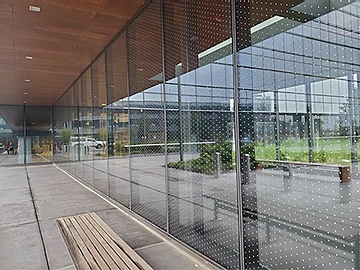
Case Study Highlights
- Location/Structure: glass enclosed pedway between a parking garage and a mirrored glass commercial building in the Chicago area
- Season: summer
- Bird Species: American robin, dark-eyed junco, fox sparrow, ruby crowned kinglet, and unidentified songbirds
- Number of Collisions: up to 15 per day reduced to 1 over 3-week period
- Solution: Feather Friendly bird collision deterrent markers installed by Wild Goose Chase
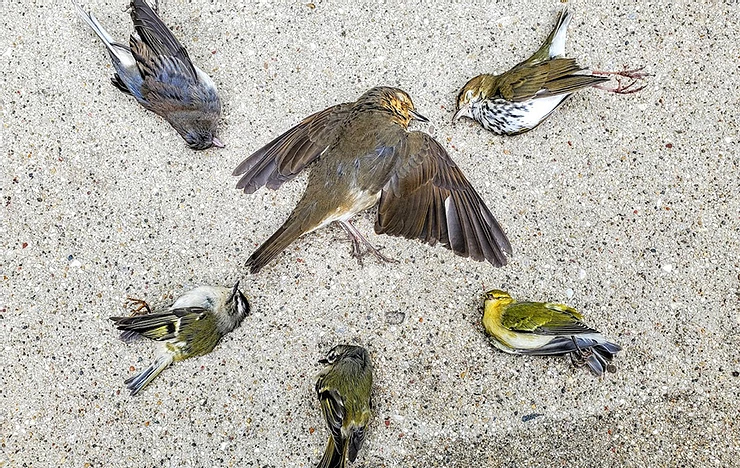
An estimated 1 billion birds die every year colliding with windows.
Businesses throughout the country are becoming more aware of this issue and the problems that come with it. When birds die in collisions with buildings, the consequences affect more than just the birds. Dead and dying birds draw scavengers like rats, racoons and coyotes that slink looking for an easy meal, creating an increased risk of zoonotic disease transmission. Dead birds also create a mess for window cleaners and grounds workers and leave a negative impression on employees and visitors.
Effective Bird Collision Prevention
There are effective means of preventing these problems, however. When a large company with a beautiful mirrored glass building in the Chicagoland area reached out to Wild Goose Chase for help with a glass-enclosed walkway that was the site of frequent bird collisions, we went to work immediately.
At our initial bird safety meeting, the client described the problem: A transparent pedway that connected the parking garage with the main building was the site of daily bird collisions. Transparent glass pedways and skywalks are some of the highest risk areas for bird collisions.
Birds saw the trees, bushes, and other habitat on the other side of the pedway, but couldn’t see the glass and were killed or injured flying into it as they attempted to reach the habitat. This often happened as employees were arriving to work – creating an unpleasant start to the day.
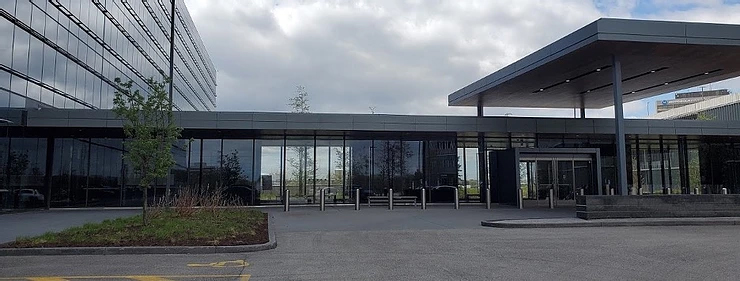
Transparent glass pedways are some of the highest risk areas for bird collisions!
Treating a large, entirely glass building wasn’t a realistic option. To make sure that we could provide the greatest results within the client’s budget, we performed a full Window Collision Risk Assessment, evaluating each facade’s risk by looking at factors that included habitat and other attractants, the amount and type of glass on each facade, glass reflectivity and transparency, and more. We spent three weeks surveying the daily bird collisions at the property, collecting data on the number, location, outcome and bird species and gender associated with collisions. Most birds are taken by scavengers before they can be counted so these surveys provide only a snapshot of collision activity meant to help direct treatment toward the most dangerous areas.
While there were days with no noted collisions, we recorded 15 collisions on a day when the weather created excellent migration conditions. With this information, we were able to determine the highest risk areas of the building to prioritize treatment. As expected, the glass pedway, with many high-risk features and fatal collisions, was the most dangerous area for birds despite the fact that the adjacent building is surfaced entirely in mirrored glass.
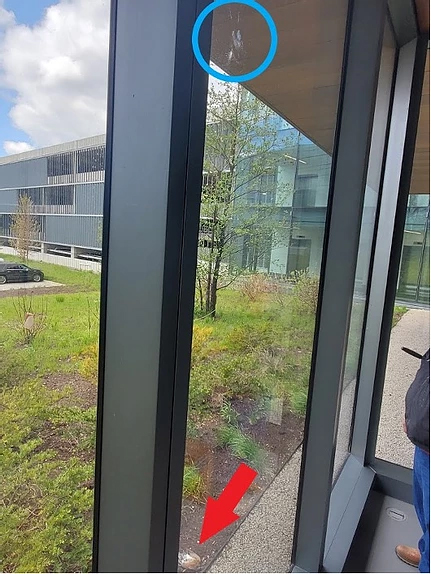
As expected, the glass pedway was the most dangerous area for birds. You can see the dead robin and the spot where it struck the window trying to fly through the glass pedway to habitat on the other side.
This pedway was selected as the primary focus of our efforts. Feather Friendly Bird Collision Deterrent Markers in a “Harmony” pattern were selected to make the glass of the pedway visible to the birds. This is a discreet, durable, and aesthetically pleasing diamond dot pattern that leaves no spaces large enough for birds to think they can fly through. While no product will completely eliminate collisions, Feather Friendly has a track record that boasts a collision reduction rate of more than 95%, and an endorsement from the American Bird Conservancy. The installation took place in July 2020, leaving the property prepared for fall migration, the most dangerous season for window collisions.
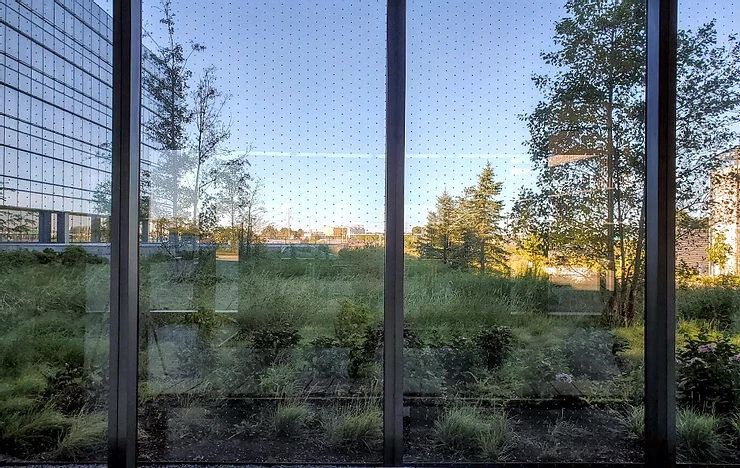
Feather Friendly’s Harmony pattern is a discreet, durable, and aesthetically pleasing pattern that leaves no spaces large enough for birds to attempt to fly through.
Reduction of Bird Collisions by 95%
The results were immediate. Three weeks of post-treatment collision surveys during September’s fall migration season revealed zero employee complaints and only one collision in which the bird was relatively uninjured and was quickly released to continue its migration journey. Encouraged by this success, the client is planning to expand their collision prevention efforts to other high-risk areas.
The project was endorsed by the Chicago Audubon Society and the Chicago Bird Collision Monitors group as “setting an example we hope other Chicago area businesses will follow for using bird friendly designs and materials. Installing Feather Friendly in this targeted location should lead to a significant reduction in harm to birds.”
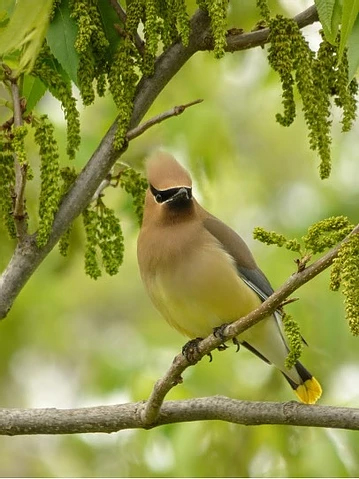
Birds like this Cedar Waxwing will be protected from future collisions at the treated glass pedway!
How to Get a Bird Collision Risk Assessment
If your property is experiencing window collisions, we can help. Our biologist-led team of experts is dedicated to providing humane, cost-effective and targeted solutions, and we can determine how to keep your property clean, healthy, and safe for birds starting with a window collision risk assessment.
Collision avoidance can start with the application of Feather Friendly window markers to the parts of your building at the highest risk of bird collisions. Treatment can then be expanded to other parts of the building after a successful reduction of collisions has been achieved in the high-risk areas. We can also evaluate the use of other structural enhancements to prevent damage caused by nesting birds and their droppings.
Contact us to learn more about preventing bird window collisions
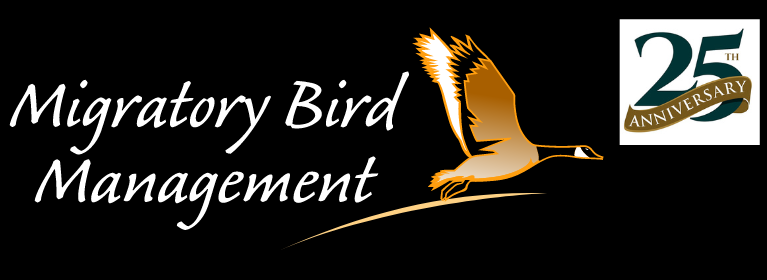



 0
0
